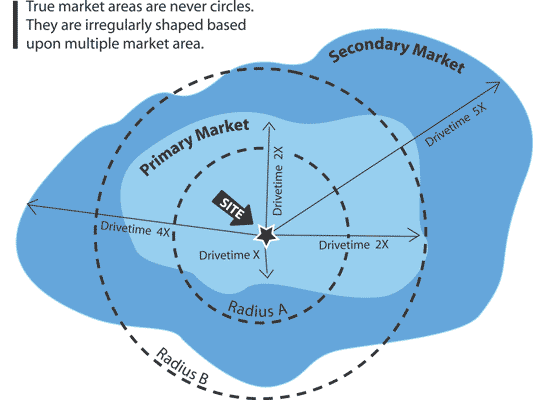
Vol. IV, No. 5, May 2004
- Editor's Corner
- Baby Boom on the Horizon & Changing Values
- Apology to the Horses
- Want to Be a Success in the LBE Business?
- Getting Wiser to Teens
- I Did My Homework, I Know My Market Area
- Summer Foundations Announced
- Mom-preneuer Speaks
- Cloning Dinosaurs
- Kid-Friendly Dining
- Carbohydrates Take a Toll
- New Projects
I Did My Homework, I Know My Market Area
Successful community location-based entertainment centers (LBEs) require multi-million dollar budgets for development and sophisticated management. Yet we are continually amazed by how many entrepreneurs start down the road of development with the lack of knowledge needed to get even the beginning basics right.
We recently received an e-mail inquiry from a woman who said she and her husband were planning to develop an FEC in a small town with a population of 3,500 people. She said they had formed an LLC, their business plan was complete and they were looking for financing. We replied that an FEC was not feasible in a town that small. She then replied that they had "done their homework," as they had 200,000 people living within 15 miles.
Being curious, we checked out her town on a map and found it was a small town located more than 10 miles outside a mid-sized city. We then checked to see where a 15-mile radius was from the town and low and behold, it took in most of that mid-sized city. We looked at the current residential density between the town and the city and found the area in between was basically countryside. The small town was not a suburb of the city. We also ran a drive-time computer simulation to determine how many people lived within a typical drive-time of her town. Using that data, and factoring in that people from a mid-sized city do not drive through undeveloped countryside to visit an FEC in an outlying town, we simulated a probable market area for the FEC. Well, the results were completely different than theirs. No longer were there 200,000 people. There were only 23,000 people, which is not enough by any stretch of the imagination to support an FEC.
So where had this couple gone wrong? (We hope they'll figure it out before they get into serious trouble by actually developing the FEC.) For whatever reason, they made a very mistaken basic assumption - they tried to use a rule of thumb that the market area for an FEC is a 15-mile radius. First, circles do not define market areas. This is a basic mistake made by just about everyone in the FEC industry, including almost all the feasibility consultants. Consumers don't have some sort on internal programming that makes them chose their destinations based upon perfect circles at some fixed distance.
Randy White, our CEO, has been doing market studies for consumer destinations for over 30 years. He says, "There is a multiplicity of factors that determine the market area for any FEC. They include the actual site and its attributes including visibility, access, and adjacent uses; competition; patterns of travel; psychological and geographic barriers; the location of major nodes of shopping and restaurants; the perceived pleasure or displeasure of driving; drive times and neighborhood identities. I have had the opportunity to plot the market areas for many existing consumer destinations and FECs, based upon existing guest data, and the market areas are never circles. They are odd shapes like amoebas. They may go distance X in one direction, and twice distance X in another and only half distance X in another. I have seen market areas vary on average from 3-20 miles, but most are 7 miles or less. Determining the market area for any project requires years of experience in studying the dynamics of consumer behavior and understanding how all the market factors interplay."

There's a second mistake most entrepreneurs make after incorrectly determining the market areas for their planned projects: They don't know how to properly interpret the demographic composition of the market area into the best mix and into projections of attendance and per capita spending. There are no rules of thumb for what is feasible based upon overall population. Interpreting demographics and socio-economic data (even more important than demographics) is more of an art than a science, and it's based on years of experience. Factors that need to be looked at and analyzed for both the primary and secondary market of a FEC include: number and increase of children by age; number and increase of families; family incomes by average, median and income ranges; parents' educational levels and employment; socio-economic/lifestyles of families with children; types of housing, plus others. There is a complex relationship between all these factors that results in a project's feasibility. If it is feasible, what plan will be most feasible, and how should it be right-sized (properly sized) for that market?
This is not a job for novices, especially when so much money is at risk. If you are planning a project or planning to renovate or expand an existing one, make the investment of retaining a qualified feasibility expert in the LBE industry to perform your feasibility study. Find one who doesn't define market areas by rule-of-thumb circles, which will be completely off target. It will be the best investment you make if you want to be successful, instead of becoming another example of industry roadkill.
Vol. IV, No. 5, May 2004
- Editor's Corner
- Baby Boom on the Horizon & Changing Values
- Apology to the Horses
- Want to Be a Success in the LBE Business?
- Getting Wiser to Teens
- I Did My Homework, I Know My Market Area
- Summer Foundations Announced
- Mom-preneuer Speaks
- Cloning Dinosaurs
- Kid-Friendly Dining
- Carbohydrates Take a Toll
- New Projects


